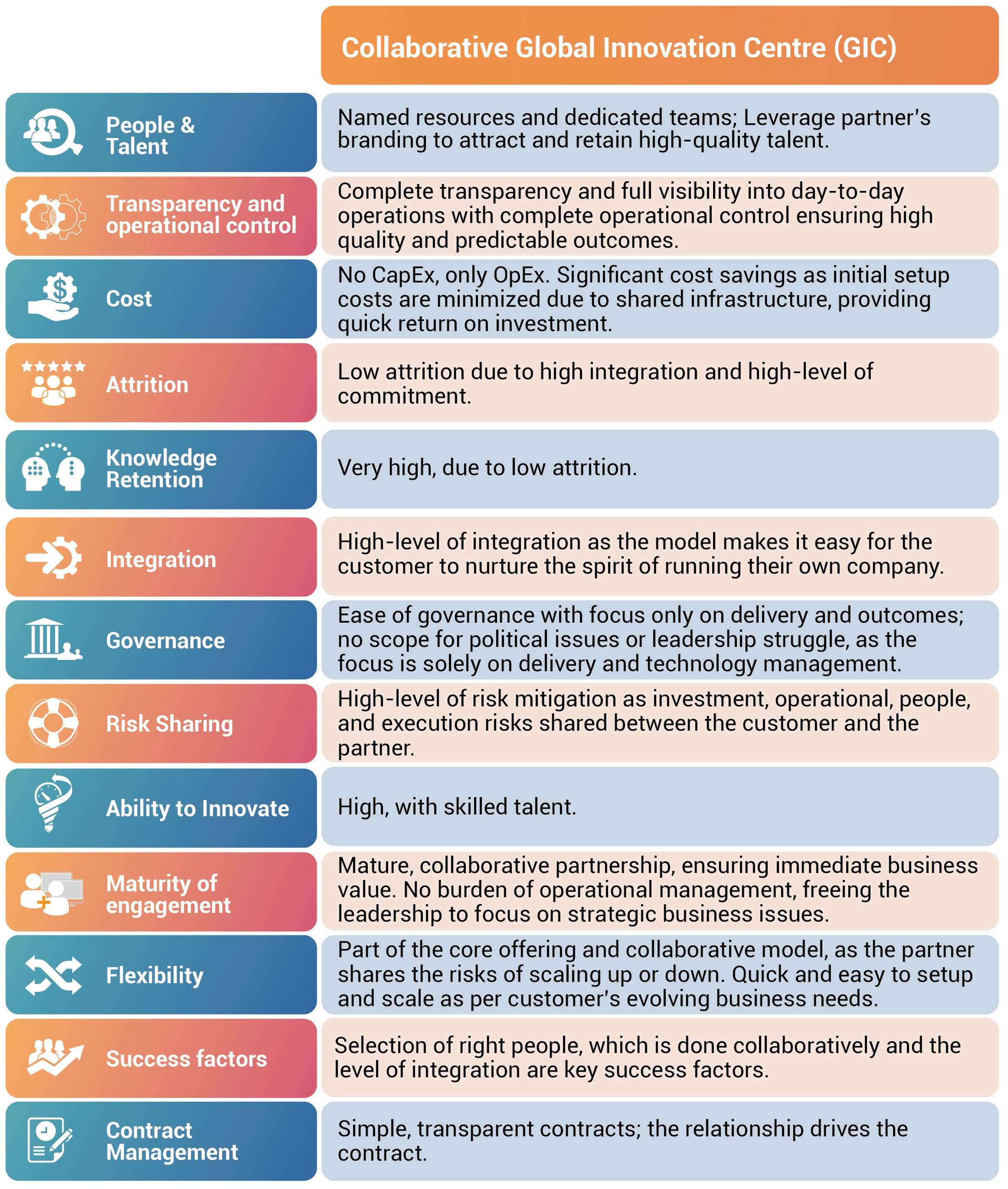
Over the past few months, immigration, dependent visas, lottery system, and movement of knowledge workers, were some of the hot trending topics, and much of the discussion in media was centred on the pros and cons of different viewpoints. In an earlier blogpost, I shared my perspective on how to pursue Borderless Innovation in the era of visa restrictions . In this article, I would like to offer a different perspective on why the debate must move beyond mere national boundaries, and address the fundamental needs of a knowledge-driven, innovation-centric global economy.
In the old economy, location mattered
For most of the 20th century, global economy was driven by manufacturing and natural resource-intensive industries, whose success was influenced by their location, access to transportation networks, availability of raw materials, market access, and labor. Consider the case of Detroit, which at one point was the automotive capital of the world, and examine the strategic reasons for its popularity:
| Resources | Availability of high-quality steel, ease of access to key resources such as iron ore and coal, made the upper-midwest the location of choice for automotive industry |
| Workforce | Migration from the war-ravaged south and a new wave of immigration from Europe ensured steady supply of labor |
| Transportation | The extensive railway network and connectivity provided by the Great Lakes made it possible to ship finished cars to across the USA and rest-of-the world. |
The economic development strategy for most countries and regional governments was based on their ability to attract investment and industries, by offering competitive advantages as low-cost manufacturing locations. Therefore, choice of location for setting up a traditional business was of strategic importance in the old economy.
Cost arbitrage-driven offshoring and outsourcing
From 80s onwards, as the industrialized nations matured and transformed into service-based economies, they were confronted with high-cost labor, slowing domestic demand, and shortage of skilled workforce. While location is still important, it wasn’t restricted to national boundaries as businesses started to seek a combination of core skills, resources, and cost-arbitrage. As you can see from the table below, over the past few decades, different parts of the world have emerged as the preferred locations for various industries and sectors:
| High-end manufacturing | China, Taiwan, Korea, and Japan |
| Low-end manufacturing | China, Southeast Asia, Latin America, and Eastern Europe |
| Automotive sector | Japan, Southern USA, Mexico, and Eastern Europe |
| IT services | India |
This initial wave of outsourcing and offshoring, which was predominantly driven by cost-arbitrage and resource augmentation, led to the rise of a truly global-scale, IT services industry in India, which generated US $ 150 + billion revenue last year!
In the new (digital) economy, location is irrelevant
In the past decade, an unprecedented storm of technology and business model disruption has dramatically altered the global business landscape. Exponential technologies led to digitization and integration of value chains, digitization of product and service offerings, gave rise to digital business models and digital ecosystems. Digital unicorns such as Google, Facebook, Amazon with their disruptive business models are having a transformative impact on diverse domains, and virtually no country, region, or sector is immune from this massive disruption.
A connected landscape with billions of smart, connected devices, people, and businesses is driving the digital economy. And in this new economy, where product is just a means to deliver a service, physical location of the business is no longer relevant. What matters more is not the location, but whether the business has the ability to offer an innovative and differentiating service that is relevant to the digital ecosystem. Digital infrastructure and knowledge workers with advanced technology skills have emerged as the key drivers of the new economy.
If data is the new oil, innovation is the new capital
A new, digital playbook is redefining conventional notions of how businesses are structured, how they operate, and how they interact with their ecosystem to provide information-rich services. In the old economy, oil was the most-valuable resource, and the fight for access and control of this valuable commodity defined much of 20th century history. In a similar fashion, in a relatively short time-span, data has emerged as the new oil of the digital economy, as can be seen by the stupendous wealth generated by digital unicorns which control vast amounts of data such as Google, Facebook, and Amazon.
Billions of connected devices generate gigabytes of data every day, ranging from mundane consumer behaviour to performance of advanced jet engines, creating an exponential demand for knowledge workers with advanced skills and sophisticated abilities to create value from the treasure trove of data. If data is the new oil, the innovative ability to leverage data using advanced technologies such as AI and ML to offer data-driven services has emerged as the new capital in the digital economy.
Global innovation demands diversity and collective intelligence
In a connected landscape, where your customer can be located anywhere in the world, it is no longer sufficient to design a product or service for your home market or for monolithic demographics or narrow segments. In an increasingly global marketplace, diversity, regional preferences, cultural variations, and demographics must influence your innovation strategy. In fact, global corporations such as Target, Cargill, Walmart Labs, Bosch, Apple, Google, Microsoft among many others have discovered – diversity of thought, insights, and collective intelligence of their geographically distributed workforce is of immense value in replicating local innovations for global markets.
Evolution of India as a major hub for Global Innovation
As the outsourcing wave picked up steam in the mid-90s, and India emerged as the preferred location for IT services, many leading global corporations have setup up shop in India, either on their own or through an Indian partner. Businesses which had the financial and governance bandwidth to setup and manage their own legal entities and operations have established Indian subsidiaries, which were initially referred to as Global Captives (NASSCOM refers to them as Global In-house Centres). In the early years, these captives focused on handling low-value work, and gradually moved to utilizing local talent to meet the global innovation needs of the parent companies.

Source: NASSCOM
As the Indian IT services industry matured and moved up the value chain, these captives evolved into indispensable Global Innovation Centres (GICs ) for their parent companies, which depend on them for high-value reverse innovation for global markets. As you can see from the above image, global corporations from diverse domains ranging from BFSI, Media, Telecommunications, Engineering, Life Sciences, to Healthcare have innovation hubs based in India.
“ India accounts for 50% of GICs globally and over 65% of the global captive headcount ”
Source: NASSCOM
Over the past 15 years, the number of GICs based in India grew ten-fold (current strength 1000+), and India has emerged as the major hub for global innovation. As industry bodies like NASSCOM and recent research has indicated, the following factors make India a preferred destination for setting up a GIC:
- Availability of talent with advanced technology skills and engineering expertise
- Ease of scaling up
- Proven capabilities and successful track record of IT services
- Enabling legal and regulatory environment with strong IP protection and data security
- Modern infrastructure, English-speaking workforce with exposure to western culture
Advantages of collaborative GICs over captives and traditional outsourcing
As many SMEs readily acknowledge, even though they are fully aware of the potential benefits, they simply lack the financial and governance bandwidth to set up and manage a fully-owned sibsidiary (captive). Over the past decade, we at coMakeIT have successfully evolved a Collaborative Global Innovation Centre (GIC) model, that helps SMEs to overcome financial and governance constraints, and leverage all the benefits of a fully-owned subsidiary. The infographic shown below captures the advantages of collaborative GICs over fully-owned subsidiaries and traditional IT service providers:
Concluding Thoughts
In this era of globalization, the debate must move beyond locations, national boundaries, and work visas. The focus must be on the best-possible innovation ecosystem which meets the diverse needs of a global marketplace. For SMEs, who are reluctant to work with traditional IT service providers, and yet lack the financial and governance bandwidth to setup a fully-owned captive, collaborative GIC is a proven and effective model to pursue innovation goals, access skilled talent, and realize better business outcomes. With a collaborative GIC, you can achieve success similar to that of a fully-owned captive, albeit at a much lower cost, significantly lesser risk, and much quicker. In this era of globalization, you need global innovation to succeed, and if you can’t make talent to come to you, you must go to where the talent is!!





